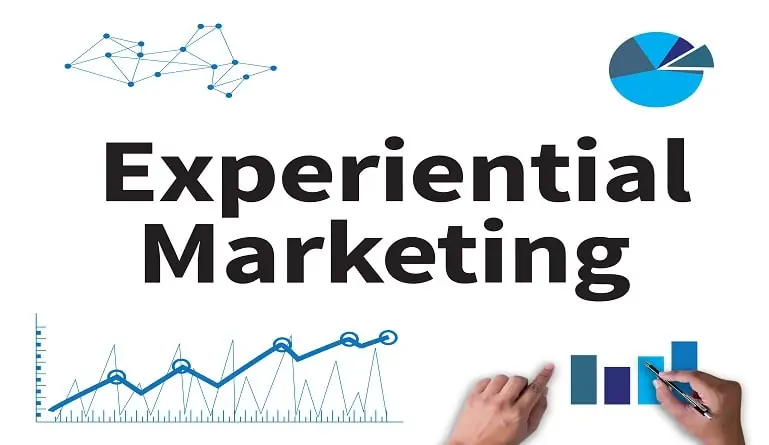As the business landscape becomes more competitive, your brand building is a crucial differentiator to set your organization apart.
Unsurprisingly, companies are intensifying their brand-building efforts, pouring more time, effort, and technology into creating a cohesive brand that leaves a lasting impression across touch points. According to research, 35% of CMOs and marketing decision-makers view brand-building as a top priority in 2024, a sizable increase from the previous year.
An organization’s brand-building strategy must factor in the current business landscape and how it’s poised to evolve in the next few years. It should also use digital technology best to reach its customers and deliver innovative brand experiences that expand awareness generation, conversion, and retention.
Analyzing the Branding Landscape of 2024
The branding landscape in any given period is always dynamic, and the pace of change has accelerated during the pandemic due to socio-economic and geopolitical changes in the last few years. A survey for 2024 found that customers are intrigued by several elements when it comes to a company’s brand strategy, including humor (62%), nostalgia (44%), and humanized branding (29.2%).
As Gen Z comes of age, the value customers expect from a brand is also changing. For example, 61% of Americans believe diversity in advertising is significant. We live in an age of increased awareness, greater sensitivity to cultural nuances, and social responsibility, where an authentic brand is considered extremely valuable.
Another trend that’s relevant to visual branding is the rise of maximalism. For several years, companies aimed for clean, almost clinical aesthetics that would position their organization as simple, sophisticated, and aspirational. The recent maximalist trend in marketing is both a product of the social media age and a culmination of our desire for expression and relating to others.
On top of this, there are more channels for brand permeation than ever before, including time-tested channels like telephony and email (which continue to be extremely popular) and new-age conversation platforms like chat, augmented/virtual reality, social, and generative AI-powered search.
4 Core Elements of a Successful Brand Strategy
When creating or refining your brand strategy in 2024, here are the core elements you need to consider:
1. Audience and customer segmentation
The target audience or your ideal customer profile defines the specific persona you’re trying to reach. These are traits common to most individuals interested in your brand, and there is a correlation between these traits and your conversion rates. While the audience is a broader concept, technologies like CRM and customer intelligence allow you to break down past buyers and website traffic into specific segments. By studying these segments, brands can pinpoint the particular groups they are catering to.
2. Values and culture
Every organization is identified by a particular set of brand values, which are sometimes intangible. Starbucks, for instance, believes in a culture of belonging exemplified in its employee and customer experiences. It refers to every barista as a partner and creates retail spaces where one will likely feel “at home.” By identifying the values and culture you stand for, you can distill your brand into a clear, distinguishable identity that’s consistently executed across channels.
3. The brand value proposition
The value proposition is an unwritten agreement between the customer and the brand, reflecting precisely what the customer can expect from every interaction. It is closely linked to the values and culture of your brand’s strategy but relatively more transactional and regularly enforced in your operations. For example, Dominos’ “30 minutes or free” promise is central to its proposition.
4. The brand voice
Voice is how your brand is communicated to buyers and the market. It involves the online and offline channels where you’re present, the copywriting style you choose to follow, the visual aesthetics of physical spaces, digital content, and ad content. Voice is essential to brand-building strategies, so technology platforms like Grammarly let you document and enforce brand voice guidelines through automation.
Embracing Digital Transformation in Branding
While the inception of every brand is in an idea, digital channels play an increasing role in how this idea is delivered, perceived, and consumed. With the rise of multiple brand channels such as your website, mobile apps, display ads, social media, and more, it is more important than ever to formulate a cohesive brand strategy reflected across digital touch points.
Some of the focus areas where embracing digital transformation in your branding strategy are:
- Establishing your digital identity: The first step when preparing your brand for the digital era is to establish a robust digital identity across three key platforms — social media, a website, and a mobile app. This ensures that customers can reach you on their preferred channel, and even if they don’t convert, the brand leaves a lasting impact.
- Improving your brand visibility on digital media: This is where marketing comes in. By aligning your martech stack and processes with your brand strategy, you can ensure your organization receives the correct type of visibility. This could mean a better search engine ranking (through SEO efforts) and increased traffic through sponsored content and paid ads.
- Building trust in your brand: Building trust can be a challenge when you embrace digital transformation in branding, as there is no human face to foster a sense of empathy and connection. For this reason, companies need to invest in PR efforts, ratings, and reviews while consistently developing a brand voice that reinforces this human connection.
Innovating Brand Experiences
One of the key reasons why you need a robust brand-building strategy is to drive differentiation. With so many companies offering similar services and infrastructure access more democratized than ever, an organization’s brand identity can help drive revenues, market value, reputation, and goodwill.
An important area of focus in 2024 is sustainability and ethical branding. Research shows that most consumers want sustainable products, and 65% want to purchase from purpose-driven brands that prioritize sustainability.
It isn’t enough to adopt green practices — such as environment-friendly alternatives to regular products, recyclable packaging, and operational changes to reduce carbon emissions. Still, organizations must also communicate these initiatives to the broader public, mainly through digital channels.
In addition to a thriving media partner network, organizations must look at organic ways to communicate their sustainability efforts, such as social media content and B2B influencers.
Another way to design innovative brand experiences is by adopting lesser-known channels. These may have a small revenue impact but hold significant cultural import. Consider using Super Bowl ads to convey a unique message or brands coming out with non-fungible token (NFT) versions of their most popular products.
Marketing data and analytics can reveal valuable insights into digital trends in brand perception so that organizations can innovate and achieve the best possible outcomes.
In Conclusion: Future Proof Your Brand with the Right KPIs
As you re-energize your brand strategies, the right key performance indicators (KPIs) will enable continuous tracking and monitoring so you can fine-tune operations accordingly. For any organization, consumer sentiment about your brand, social media engagement, intent, website bounce rate, and net promoter score are some of the critical KPIs necessary for brand building.
Marketing leaders must remember that branding is both an art and a science, and technology can help you across the strategy stage and in execution. By leveraging data analytics, automated brand guidelines enforcement, and an intelligent channel mix, you can future-proof your brand for 2025 and beyond.





